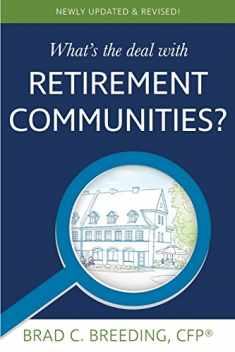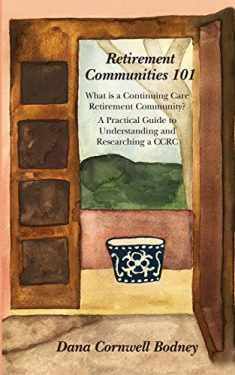
Continuing Care Retirement Communities: An Empirical, Financial, and Legal Analysis
Book details
Summary
Description
Continuing Care Retirement Communities. First published in 1984. "Today there are about 275 continuing care retirement communities (CCRCs) in the United States where some 90,000 elderly people (average age about 80) live independently in their own apartments but have the opportunity for eating together, group recreation, and other activities that comes from being part of an organized community. Most important, in addition to having immediately available a variety of health and social services which they can call on according to their desires and needs, the residents have a virtual guarantee that they will be adequately taken care of no matter what happens to their health. The fear of someday being a burden on relatives or friends or of finding oneself helpless among uncaring strangers is effectively removed. It is this health care guarantee that principally distinguishes CCRCs from other retirement communities. CCRCs provide insurance against the cost of long-term care, and supplement coverage of acute health care costs paid for largely by Medicare and private insurance. Their unique feature is that they provide this otherwise unobtainable full insurance in combination with independent living arrangements that the resident can enjoy as long as health permits. CCRCs are intended to be fully self-supporting, and therein lies the origin of this book. The study is the first detailed analysis of the actuarial, financial, and legal issues involved in keeping existing CCRCs financially sound and providing for the formation of new communities in ways that protect the rights of residents while assuring the perpetuation of the community. CCRCs provide essentially a new form of insurance, but until now this type of insurance has not been subjected to rigorous examination. It is fortunate that such an examination has begun, and it is to be hoped that this book will be followed quickly by other work in the field. The members of the Advisory Committee who worked closely with the research team believe that the CCRC field may be on the threshold of a major expansion, principally because for the first time large numbers of older Americans will be able to meet the cost. The financing method combines a sizable entrance fee (average $35,000 single and $39,000 couple at the time of the study) with a monthly payment which is adjusted from time to time for inflation and occasionally other factors (average $600 single and $850 couple). About 70 percent of older people now own their homes, and in many cases they have enough equity in those homes to meet the required entrance fees. And inflation-proof Social Security plus some additional income from private pensions and investments can form a basis for meeting the monthly fee for many older people, although undoubtedly considerably less than a majority. It is true that many who can afford CCRCs will nevertheless prefer other retirement arrangements, but for a considerable number the full health insurance, including long-term care, combined with independent living in a community setting will make CCRCs attractive. On behalf of the other 12 members of the Advisory Committee, I wish to commend the research team-Howard E. Winklevoss, Ph.D., project director; Alwyn V. Powell, MAAA; David L. Cohen, Esq.; Ann Trueblood-Raper; and Amy R. Karash-for their efforts to address the comments and suggestions of the Advisory Committee throughout the past 18 months and for diligently pursuing the research which has produced this book. We also wish to thank Dr. Dan M. McGill, who served the study as consultant to the research team and as chairman of the Wharton School Insurance Department and the Pension Research Council. It is our hope that the book will be useful to public policymakers, to corporations and foundations with an interest in older people and their health, to the financial community, and to potential sponsors of CCRCs."


We would LOVE it if you could help us and other readers by reviewing the book
Book review





